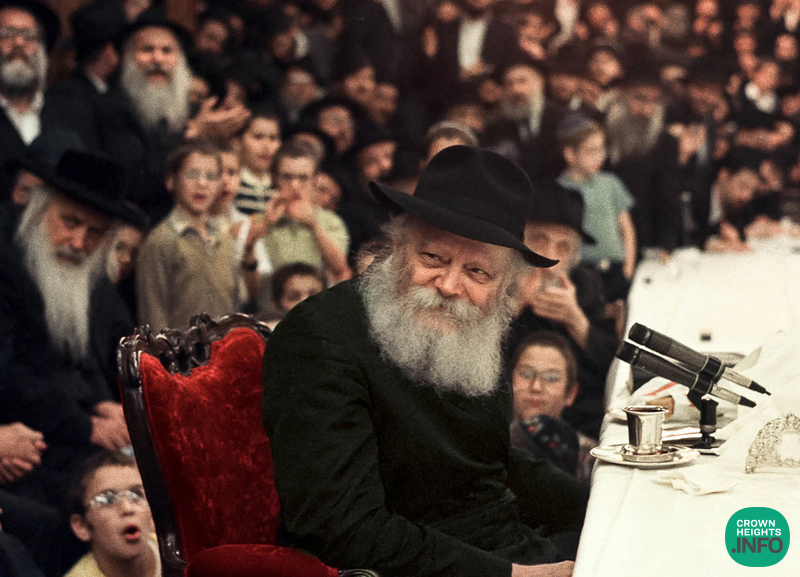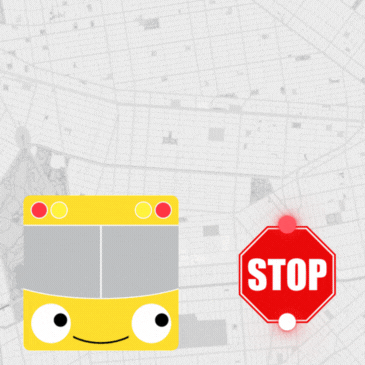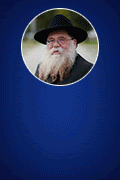
Weekly Dvar Torah: Bound by Love, Armed for Victory
The love of the Rebbe for his Chassidim and the reciprocal love of Chassidim for the Rebbe is not merely a philosophical idea—it is the very lifeblood of Chassidus. This love, so central and fundamental, transcends time and place. This bond has never been more palpable to me than during the past few weeks, as we celebrated the momentous milestone of seventy-five years of the Rebbe’s leadership.
I was privileged to Farbreng and speak to four distinct groups during this celebration: a group of fourteen-year-olds, a gathering of women, a cohort of middle-aged men, and a group of teenagers from war-torn Ukraine who had traveled great distances to be near the Rebbe on this historic occasion. Despite their differences in age, background, and life experience, there was one common denominator among them all—they had come prepared. They had arrived with a deep sense of mission and an eagerness to mark this anniversary in the most meaningful way possible.
To understand the significance of this moment, some historical context is necessary. The Previous Rebbe, Rabbi Yosef Yitzchak Schneerson, passed away on Shabbos, the 10th of Shvat, 5710 (1950). On the preceding Friday, he had issued a Chassidic discourse in honor of his grandmother’s yahrzeit, which also fell on the 10th of Shvat. This discourse, consisting of twenty chapters, would become the foundation for an ongoing tradition. One year later, on the 10th of Shvat 5711 (1951), the new Rebbe delivered his first Maamar, choosing to expound upon the first chapter of the discourse his father-in-law had published. With this, the Rebbe assumed the mantle of leadership, marking the beginning of the seventh generation of Chabad-Lubavitch.
From that year onward, a tradition emerged. Each year, the Rebbe would explain the next chapter of the discourse, completing the first cycle after twenty years in 5730 (1970). The cycle then restarted, and this pattern has continued ever since. This year, as we marked seventy-five years, we reached Chapter 15 for the fourth time.
The impact of this cycle was felt worldwide. The entire Chabad community was infused with an electrifying excitement, a shared anticipation to delve into Chapter 15 once more. The explanations the Rebbe had given in 5725 (1965) and 5745 (1985) were studied anew. Dozens of booklets were published, each containing insights and commentaries on the Maamar, catering to all levels of understanding. Classes were held in multiple languages and formats, making these teachings accessible to every Chossid, regardless of age or background. The flames of learning and inspiration burned brightly in every corner of the world.
For an entire month leading up to Yud Shvat, I found myself engaged in constant discussion about this Maamar. No matter where I went, whether at a formal gathering or a chance encounter on the street, conversations would naturally turn to the depth and power of this chapter. Friends, acquaintances, and even strangers would eagerly share their thoughts, insights, and personal reflections. WhatsApp groups and YouTube channels were buzzing with lectures and discussions, each one a testament to the unity and dedication of Chassidim to their Rebbe’s teachings.
The most astonishing moment for me came in a simple, almost humorous exchange. I had just finished expressing my elation to my wife over this widespread enthusiasm when someone passing by interrupted to share his own excitement. He had just attended a class where a masterful teacher had explained the very same Maamar. It was as if the world itself had become a Beis Midrash, a great study hall resonating with the words of the Rebbe.
But what was the essence of this years Maamar? What was it that had ignited such fervor? The central theme revolved around the weapons bestowed upon the soldiers of Hashem’s army—those destined to win the final battle for the coming of Moshiach. The Rebbe explained that the King, in his desperate bid to secure victory, opens his most hidden treasures and lavishly bestows them upon his soldiers. This is an act of unparalleled generosity, an unprecedented revelation of Divine power.
And what is this treasure? It is none other than the most secret and concealed power of G-d Himself—the power of Divine concealment, the act of Tzimtzum, where G-d withdraws and conceals His infinite light to make space for creation. But here lies the wondrous paradox: this Divine concealment does not begin at the lowest levels of existence; rather, it starts at the highest, loftiest realms—those closest to G-d Himself. This concealment is not a mere act of restriction; it is the greatest manifestation of Divine power, a power that belongs to G-d alone. While a created being requires an external object—such as clothing—to conceal itself, G-d conceals Himself with Himself.
True, this is a very deep and difficult concept. I just wanted to give you a glimpse into the minds of Lubavitcher Chassidim—from teenagers to seasoned citizens. Ashreinu! How lucky we are.
And it is this very power, this Divine concealment, that G-d bestows upon His army. He entrusts His Chassidim with the ultimate weapon, empowering them with His very essence. In doing so, He elevates them to a level of unparalleled closeness—so close that they, too, embody this Divine ability. The Chossid, armed with this treasure, stands at the pinnacle of spiritual power, wielding the force necessary to bring the world to its destined redemption.
The realization of this truth transformed the atmosphere among Chassidim. In the weeks leading up to Yud Shvat and on the day itself, the air was thick with emotion. There was an overwhelming sense of connection—to G-d, to the Rebbe, to each other. It was irrelevant whether one had ever seen the Rebbe in person. Age and experience played no role. What mattered was the shared sense of mission, the feeling of being armed and ready to win the ultimate war for Moshiach.
Above all, what became most tangible was the love. The love that Chassidim felt for their Rebbe, and the love they knew—beyond any doubt—the Rebbe had for them. It was an all-encompassing, almost electric feeling that pulsed through every interaction, every word, every song sung at a Farbrengen.
The Hayom Yom entry for 14 Shvat encapsulates this beautifully. The Rebbe teaches that our holy Rebbes, throughout the generations, have always evoked Divine compassion for their Chassidim. More than that, they have actively thought about their Chassidim, contemplating their affection and devotion. This act of mindful connection is not one-sided; rather, it stirs the depths of the soul. Just as a person who is gazed at intently will instinctively turn and return the gaze, the Rebbe’s thought awakens the deepest inner powers of his Chassidim. And the Rebbe emphasizes that this phenomenon does not weaken when the Rebbe is no longer physically present in this world. On the contrary—it becomes even stronger.
This past Yud Shvat, I felt it. I experienced it. The love was alive, tangible, inescapable. It was not an abstract concept, nor a distant memory—it was a present reality, enveloping every Chossid in its embrace. And as we move forward from this milestone, armed with the Rebbe’s ultimate gift, we do so with the knowledge that this love will never wane. It will only grow stronger, propelling us toward the final victory—the revelation of Moshiach, may it be speedily in our days.
Have a Shabbos of Chassidic Love and Victory,
Gut Shabbos
Rabbi Yosef Katzman












